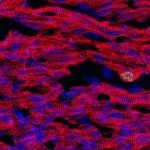Link to Pubmed [PMID] – 31208960
Link to DOI – dmm03835610.1242/dmm.038356
Dis Model Mech 2019 07; 12(7): dmm038356
Laterality defects are developmental disorders resulting from aberrant left/right patterning. In the most severe cases, such as in heterotaxy, they are associated with complex malformations of the heart. Advances in understanding the underlying physiopathological mechanisms have been hindered by the lack of a standardised and exhaustive procedure in mouse models for phenotyping left/right asymmetries of all visceral organs. Here, we have developed a multimodality imaging pipeline, which combines non-invasive micro-ultrasound imaging, micro-computed tomography (micro-CT) and high-resolution episcopic microscopy (HREM) to acquire 3D images at multiple stages of development and at multiple scales. On the basis of the position in the uterine horns, we track in a single individual, the progression of organ asymmetry, the situs of all visceral organs in the thoracic or abdominal environment, and the fine anatomical left/right asymmetries of cardiac segments. We provide reference anatomical images and organ reconstructions in the mouse, and discuss differences with humans. This standardised pipeline, which we validated in a mouse model of heterotaxy, offers a fast and easy-to-implement framework. The extensive 3D phenotyping of organ asymmetry in the mouse uses the clinical nomenclature for direct comparison with patient phenotypes. It is compatible with automated and quantitative image analyses, which is essential to compare mutant phenotypes with incomplete penetrance and to gain mechanistic insight into laterality defects.

